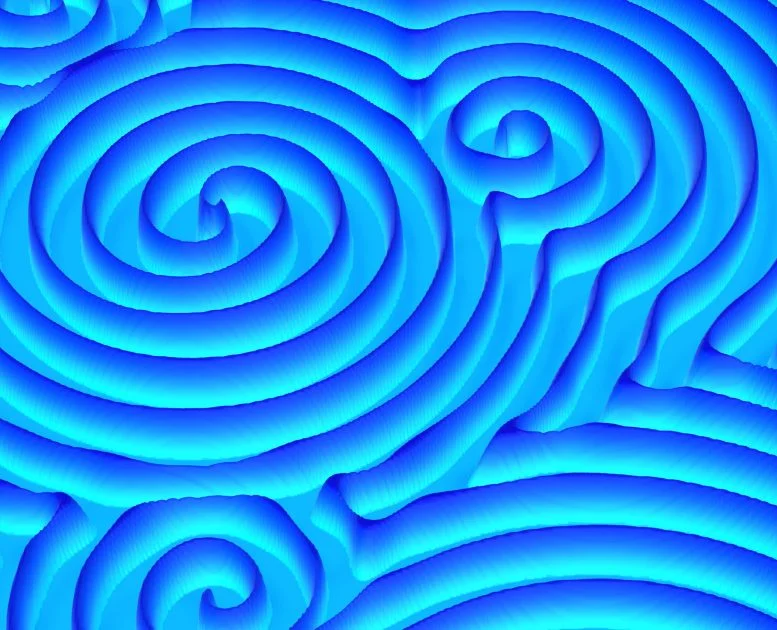
By Max Planck Institute for Dynamics and Self-Organization December 20, 2024
Collected at: https://scitechdaily.com/unlocking-natures-secret-how-invisible-forces-create-perfect-patterns/
A new model reveals how molecular interactions drive order in active systems.
Scientists from the Department of Living Matter Physics at the Max Planck Institute for Dynamics and Self-Organization (MPI-DS) have found that non-reciprocal interactions can enhance order in active systems. Using a newly developed model, they demonstrated how the degree of non-reciprocity influences the formation of patterns, providing deeper insight into the organization of complex, dynamic systems.
Non-Reciprocal Interactions in Living Matter
Living matter exhibits unique characteristics not found in simpler physical systems. One striking example is the uneven interaction between different types of particles. For instance, one molecule may be attracted to another, while the second is repelled — similar to how a predator pursues its prey, which instinctively tries to escape. This phenomenon, known as non-reciprocal interaction, can produce complex, large-scale patterns, as has been shown previously. These patterns often resemble essential structures found in living systems, such as the organization within a cell.
Exploring Non-Reciprocity and Pattern Formation
In a new study, Navdeep Rana and Ramin Golestanian explored the interplay between non-reciprocity and the formation of defects, which influences the resulting patterns.
“Typically, stronger non-reciprocity causes higher activity and is thus associated with less order in the system,” explains Rana. “However, we found that in fact the opposite is true, and well-ordered wave patterns are formed when non-reciprocity exceeds a certain level.”
Thus, the new study highlights the importance of non-reciprocity in eliminating defects in active systems to create ordered structures.
Simulation Insights into Defect Dynamics
The scientists used simulations to probe the physical properties of the naturally occurring defects that disrupt order, just like the dislocations in the metal that is used to make spoons.
“While a non-equilibrium drive in the form of repeated bending of a spoon creates more entangled defects and weakens its strength until it breaks, non-reciprocal interactions drive the system towards the path of eliminating the defects and creating perfect order.” adds Golestanian.
“This remarkable property opens many avenues for applications of non-reciprocal active matter systems,” he concludes.
Concluding Remarks on Active Matter Organization
Overall, the study reveals fundamental physical principles underlying the organization of active matter – which are important for the formation of life.
References:
“Defect interactions in the non-reciprocal Cahn–Hilliard model” by Navdeep Rana and Ramin Golestanian, 9 December 2024, New Journal of Physics.
DOI: 10.1088/1367-2630/ad9859
“Defect Solutions of the Nonreciprocal Cahn-Hilliard Model: Spirals and Targets” by Navdeep Rana and Ramin Golestanian, 15 August 2024, Physical Review Letters.
DOI: 10.1103/PhysRevLett.133.078301

Leave a Reply